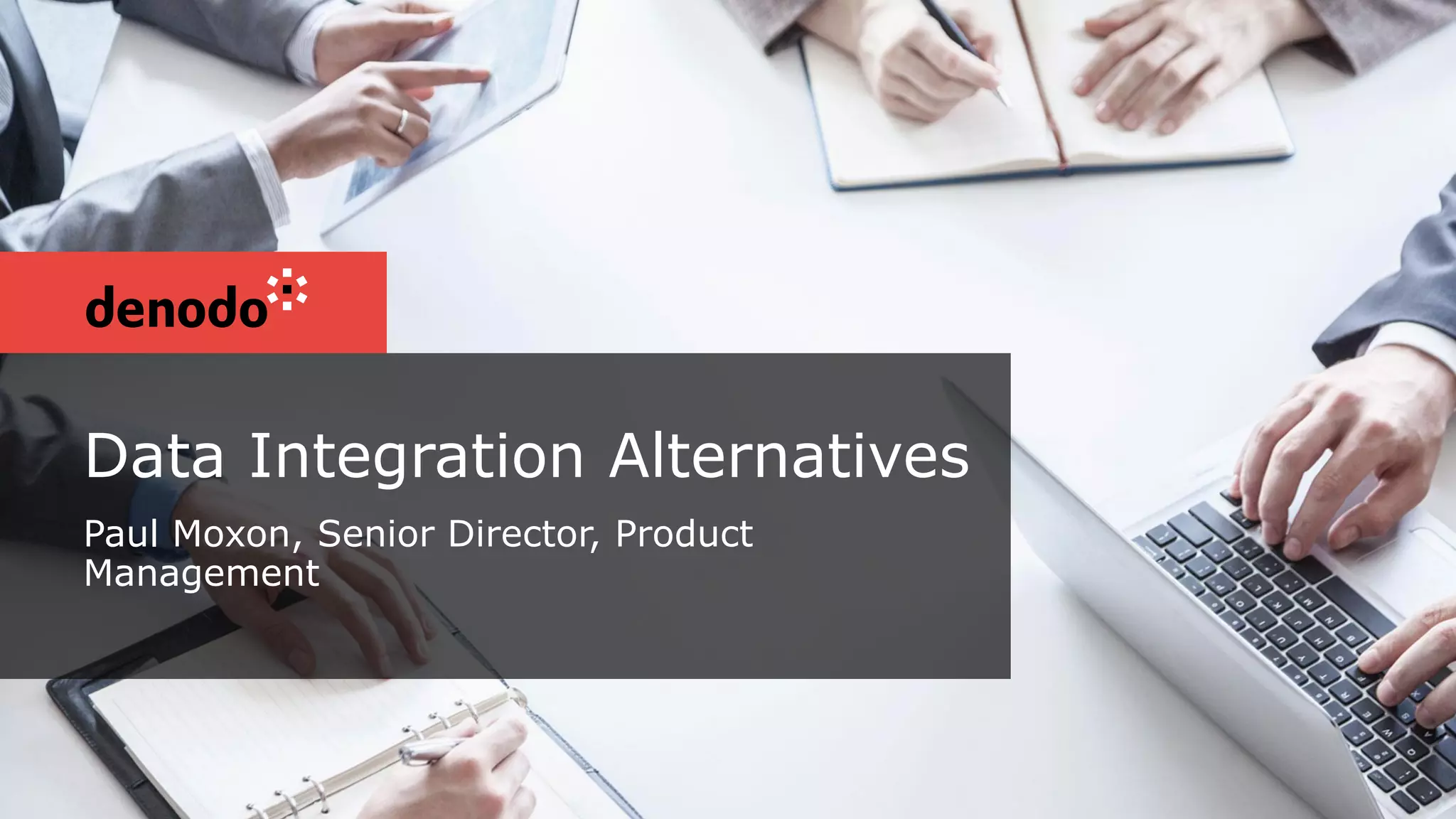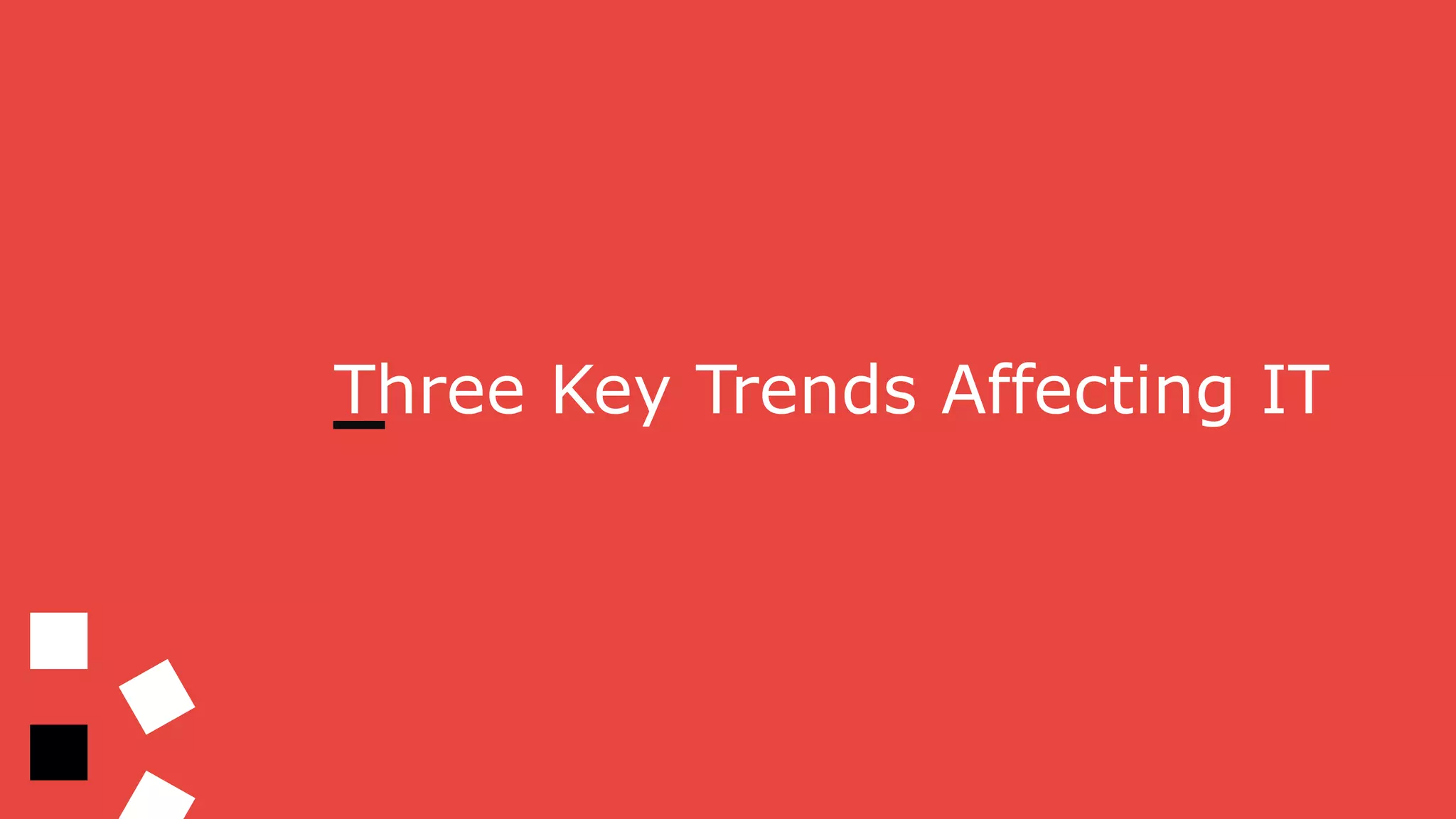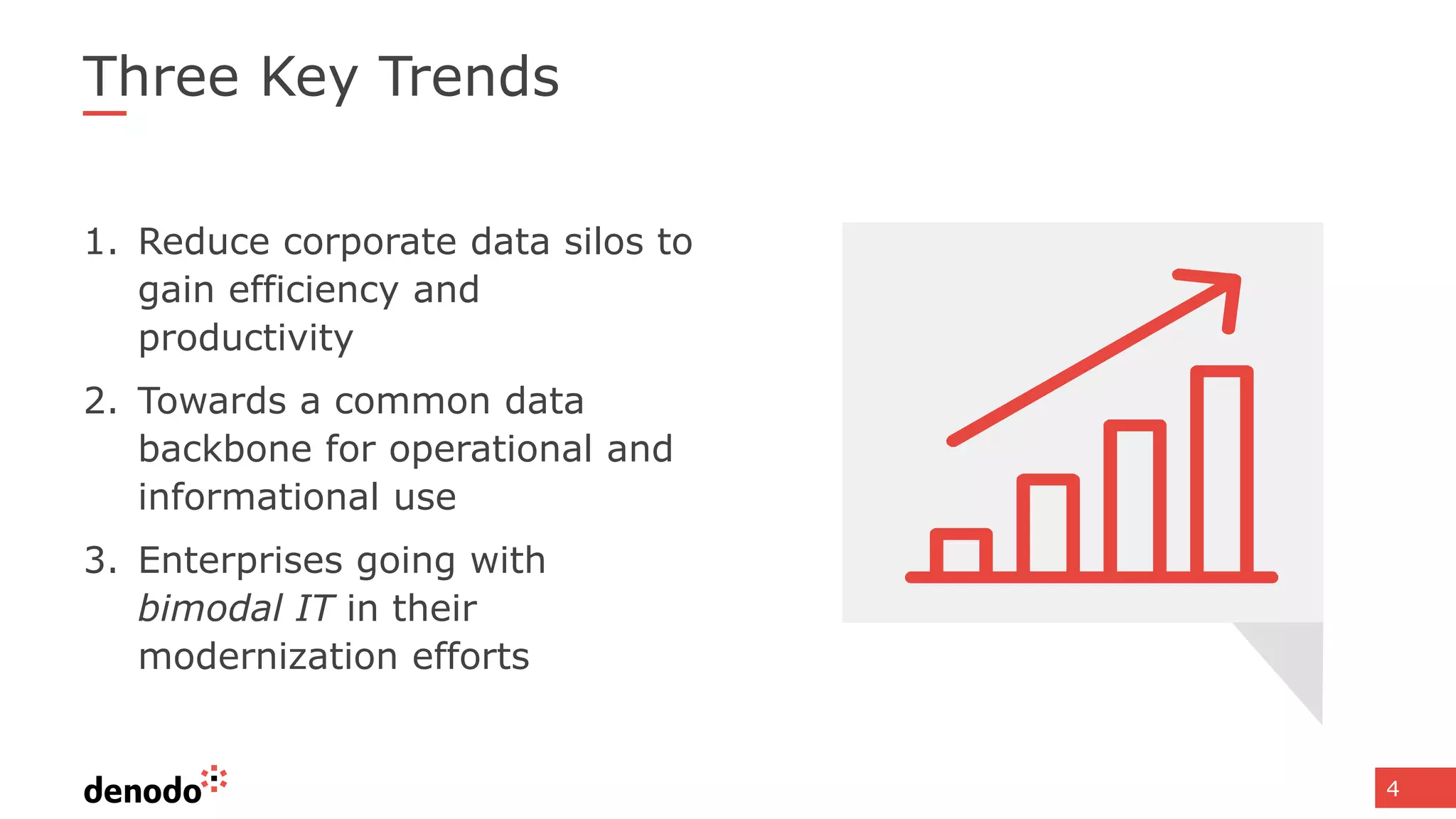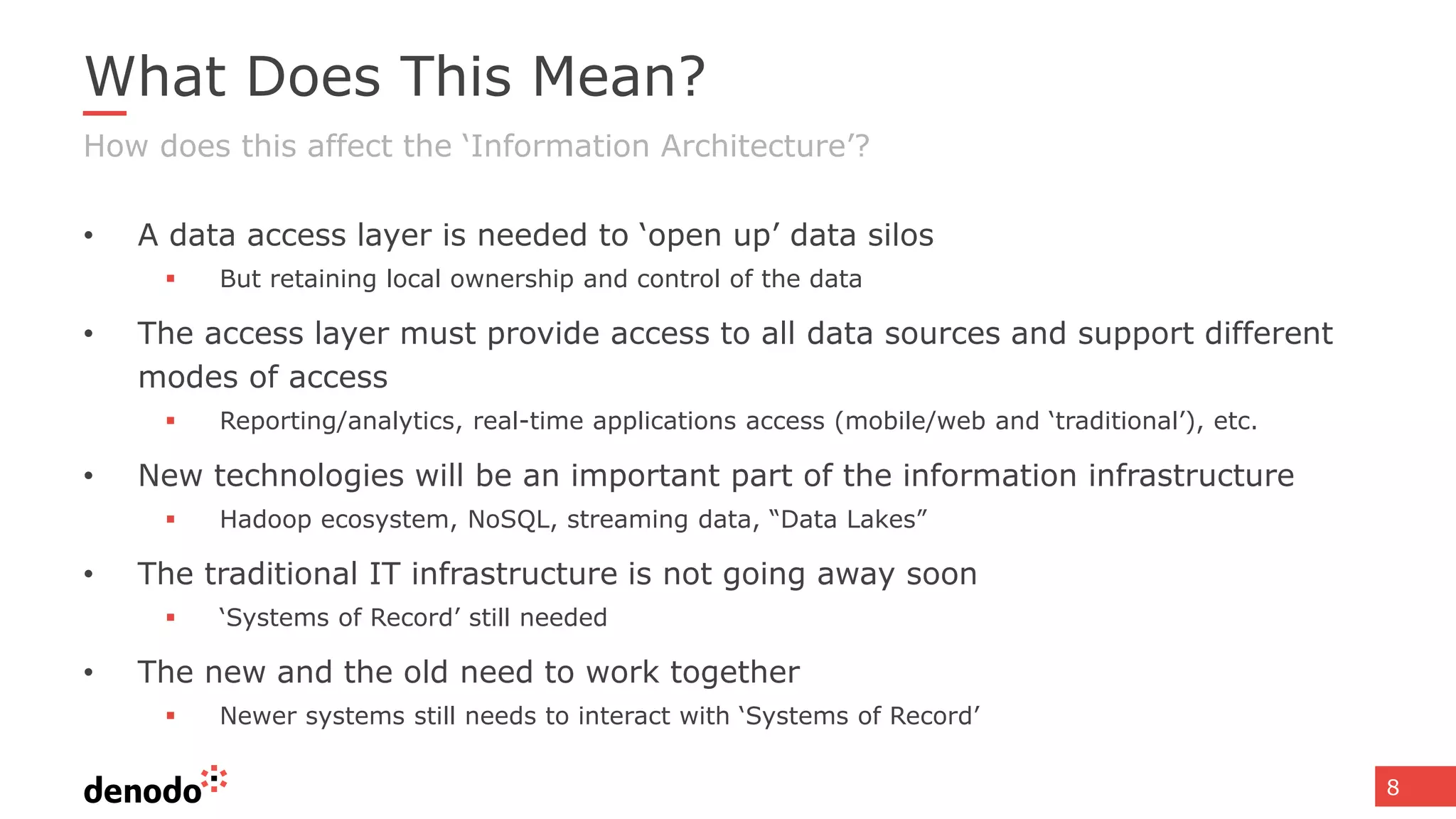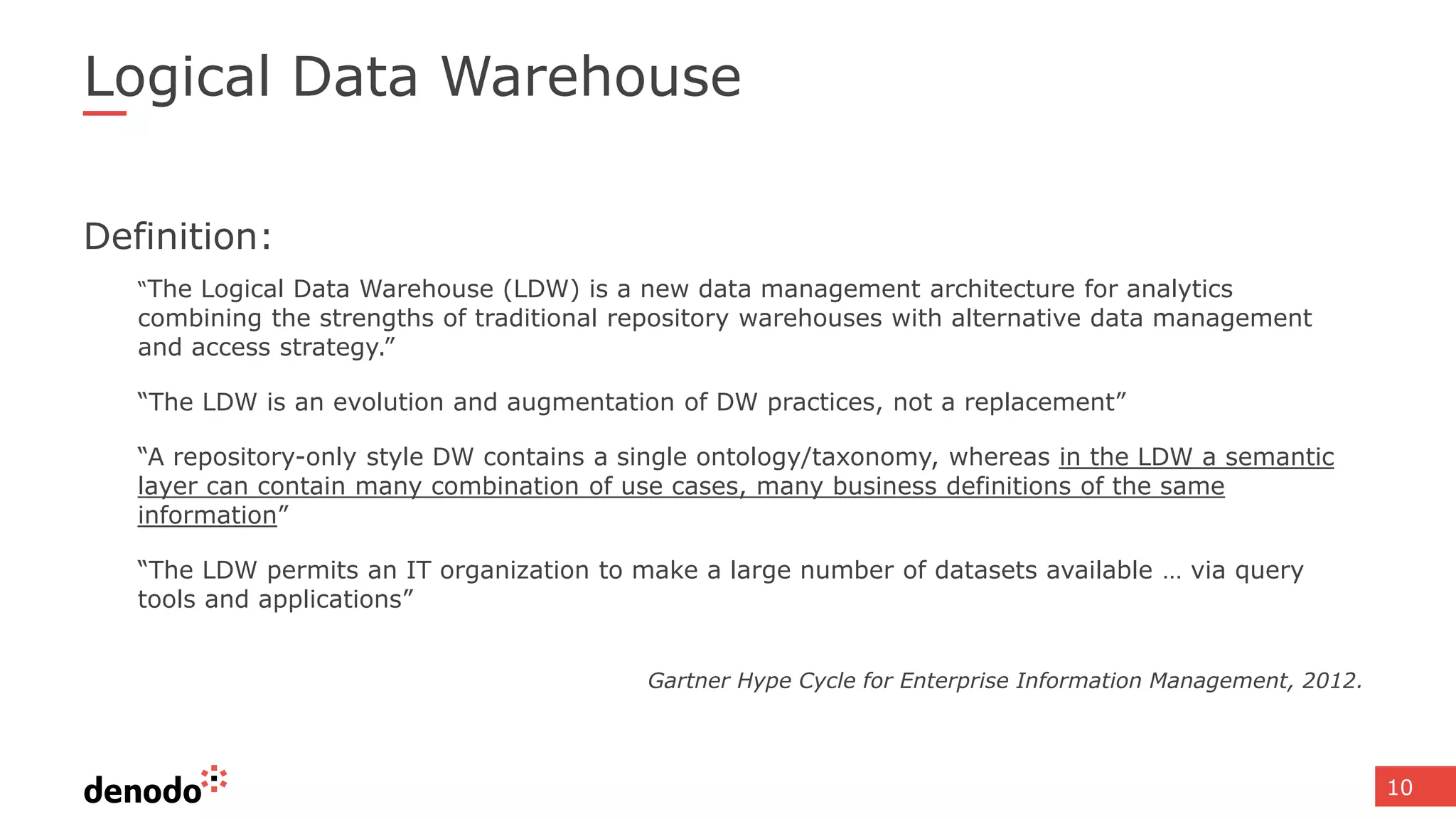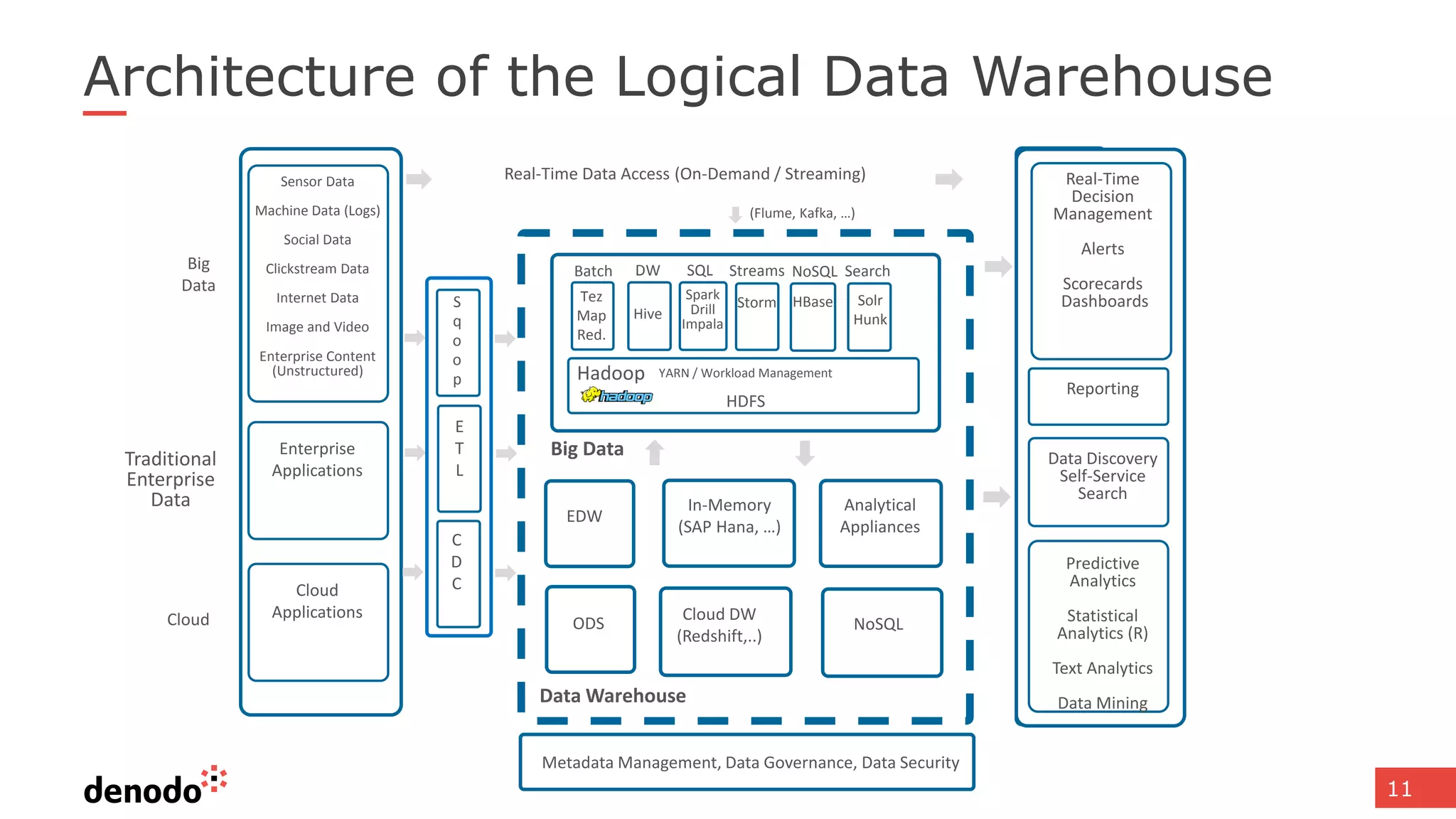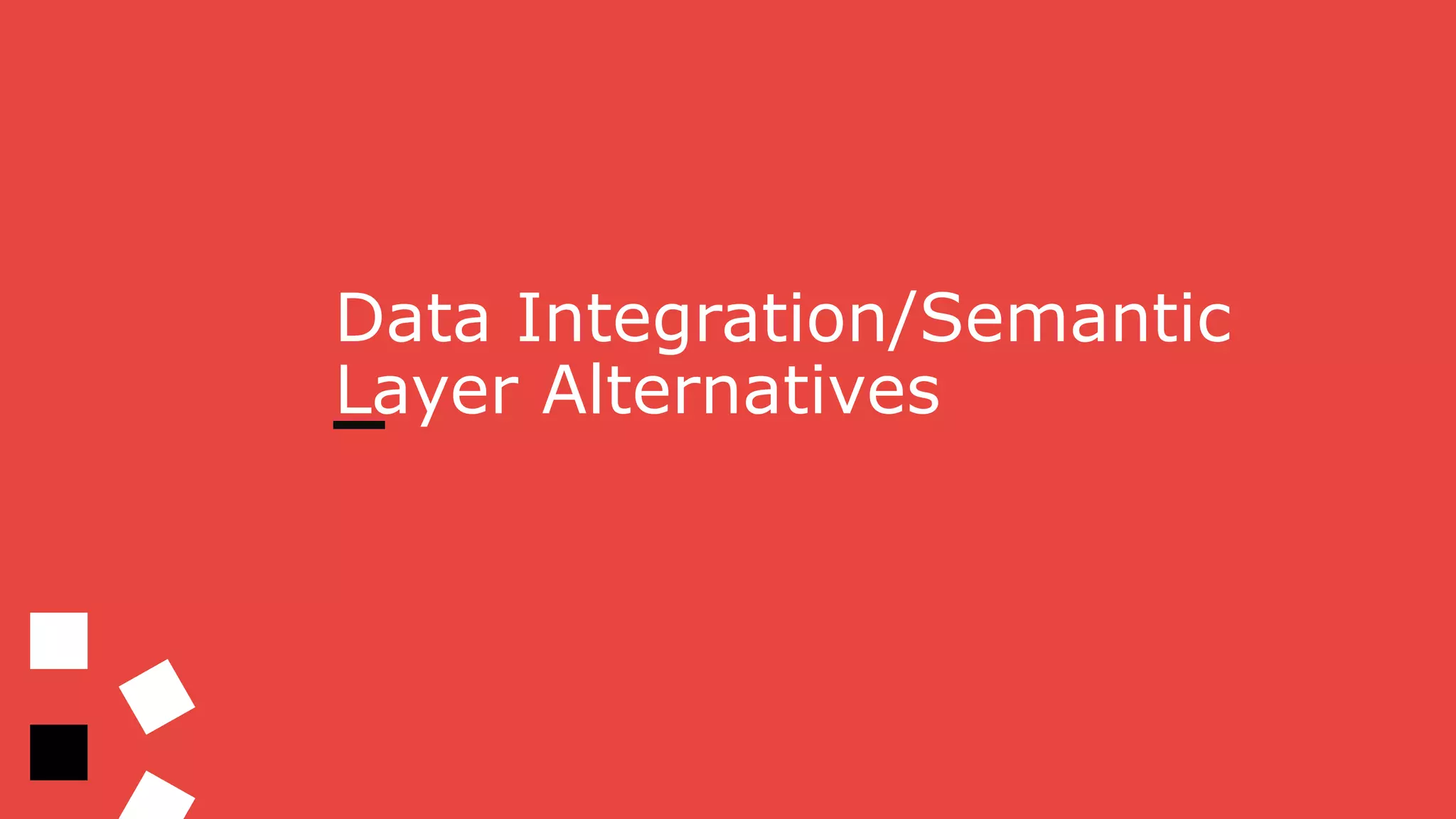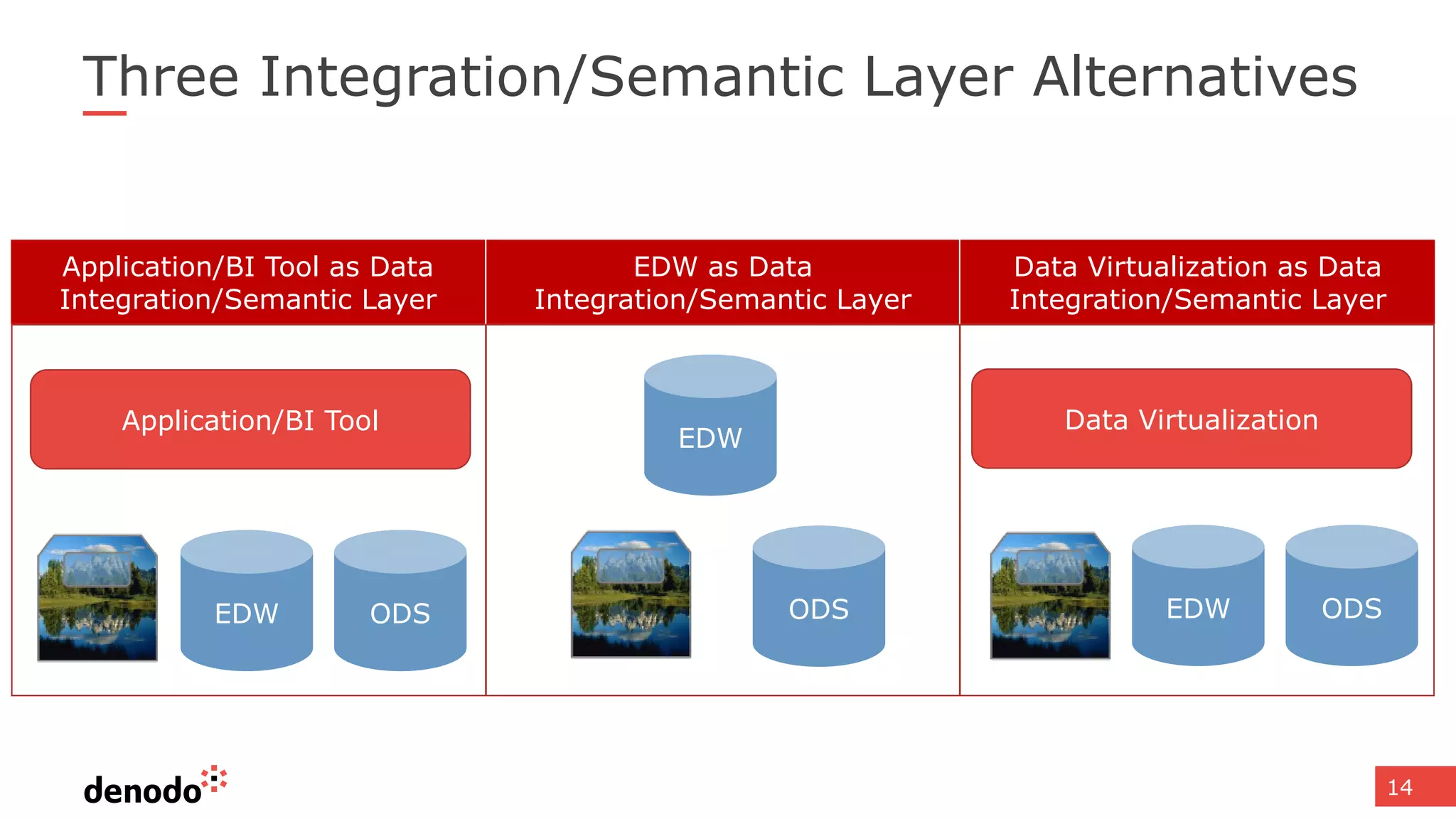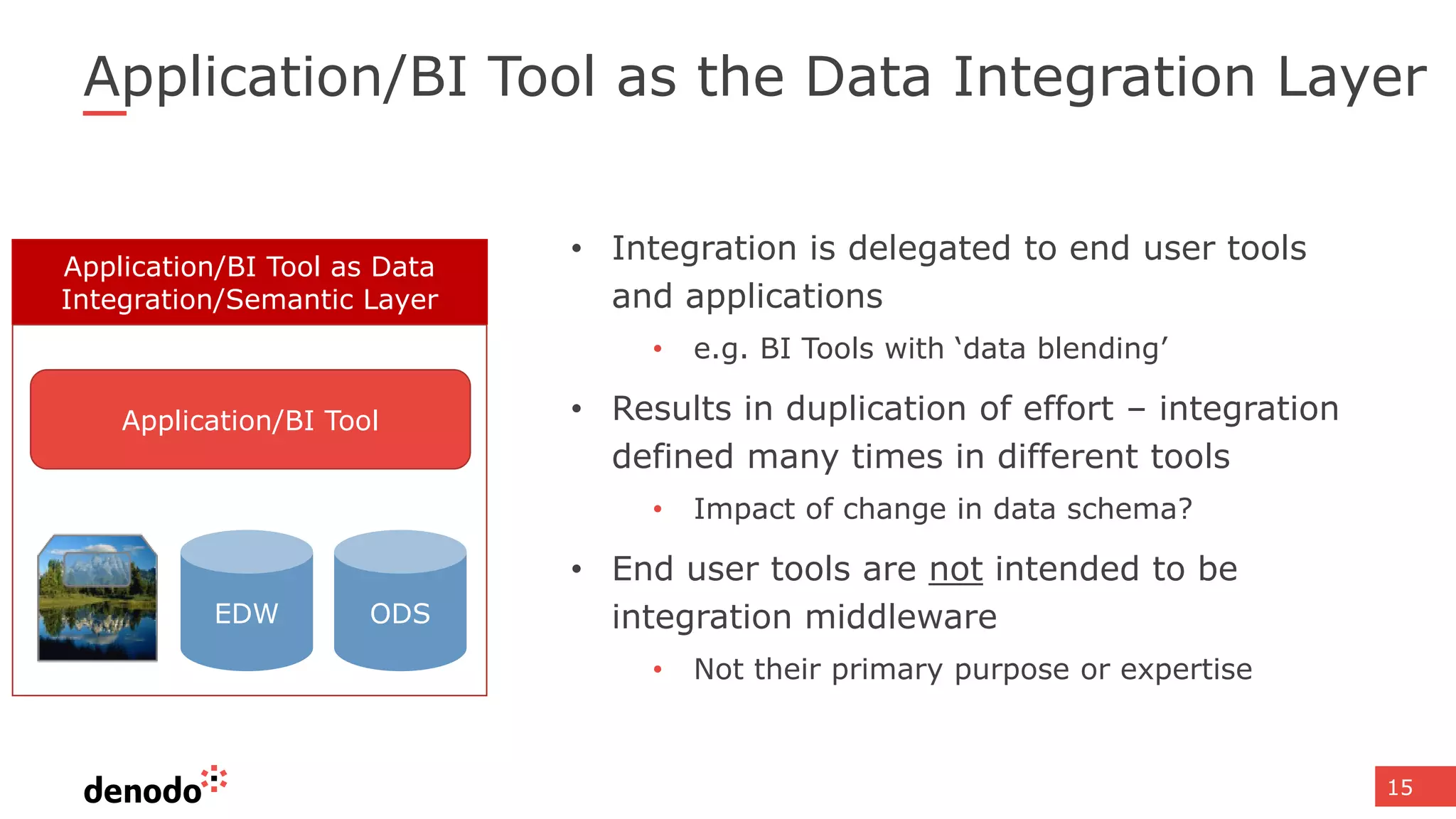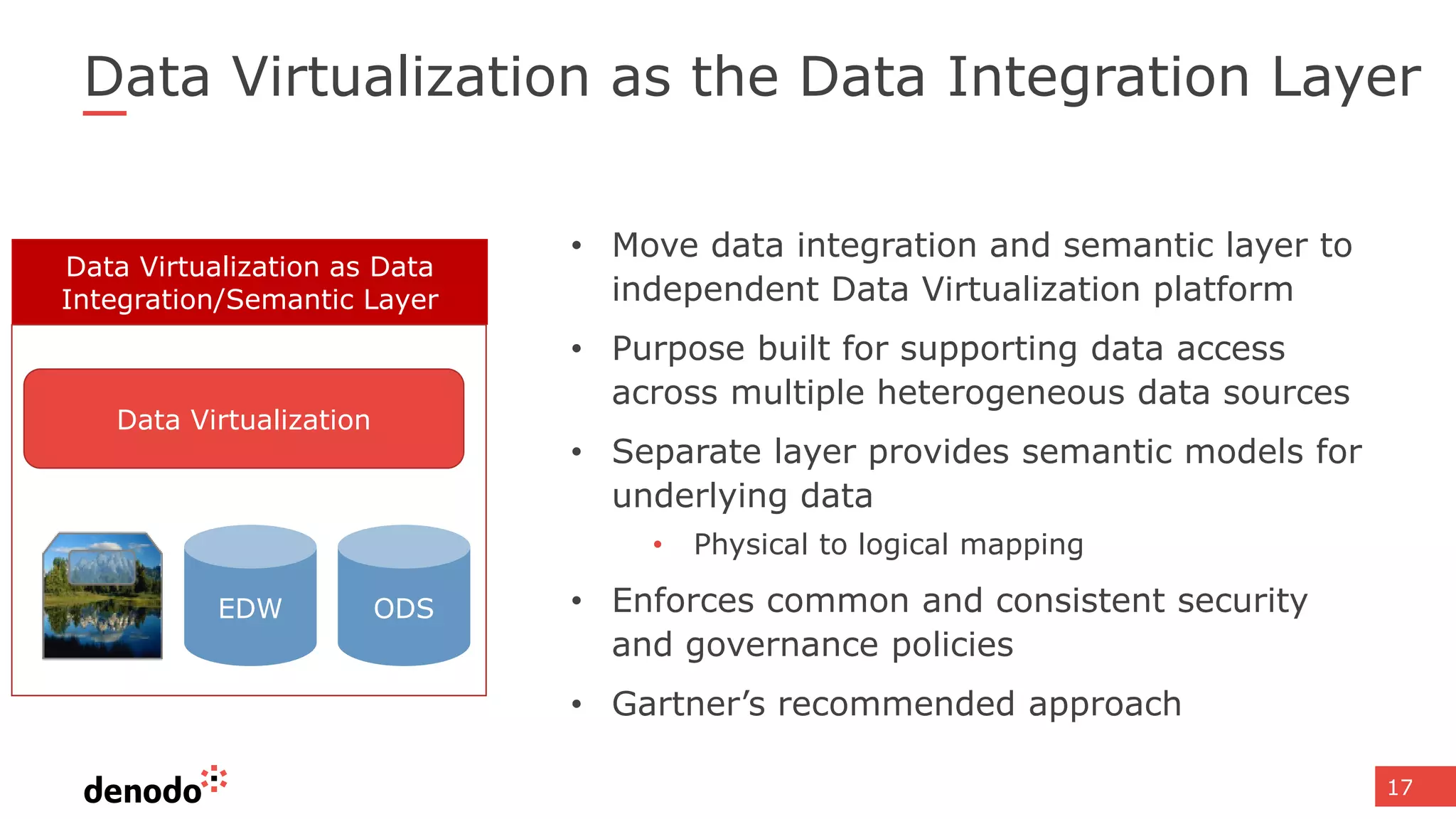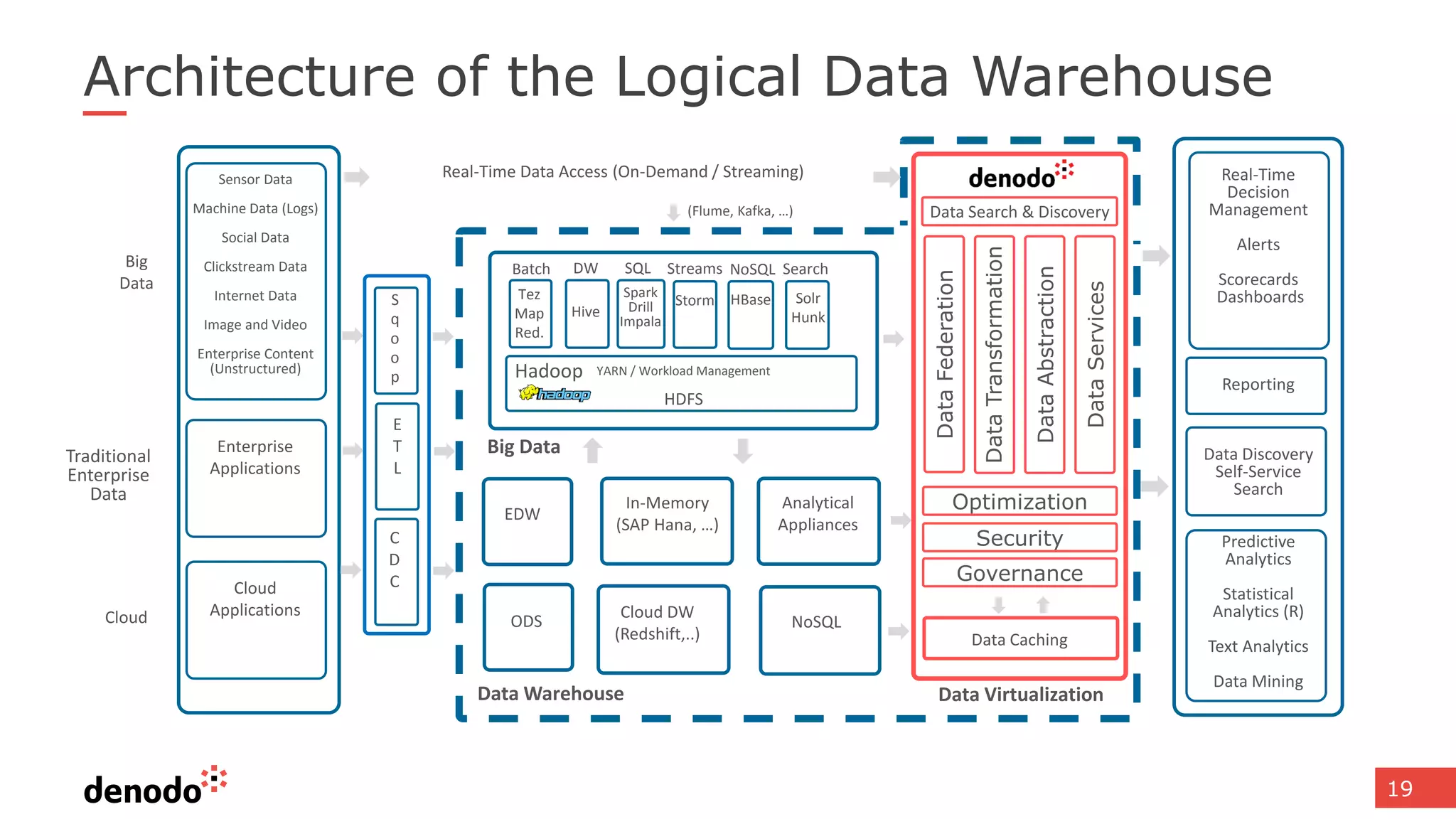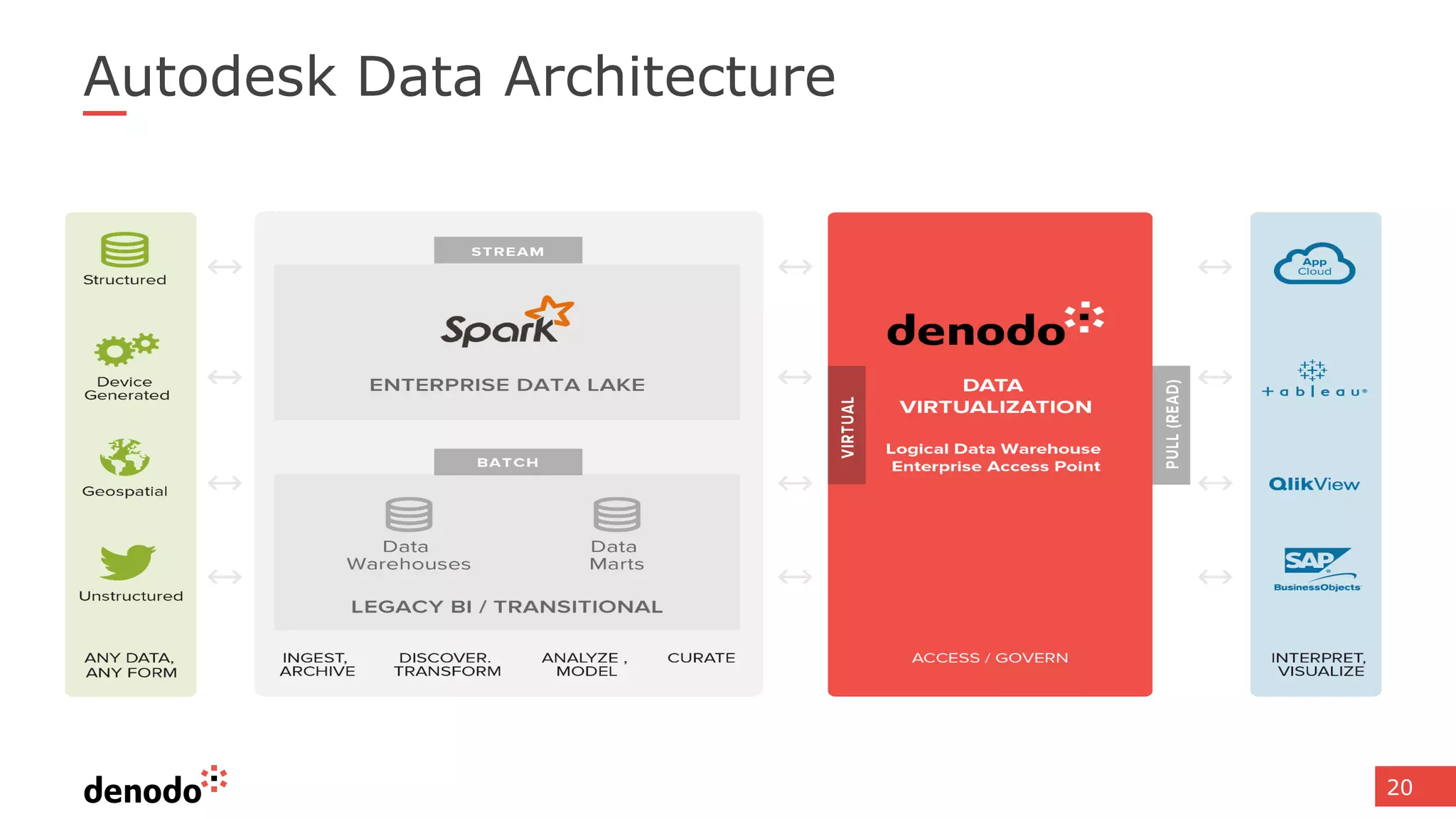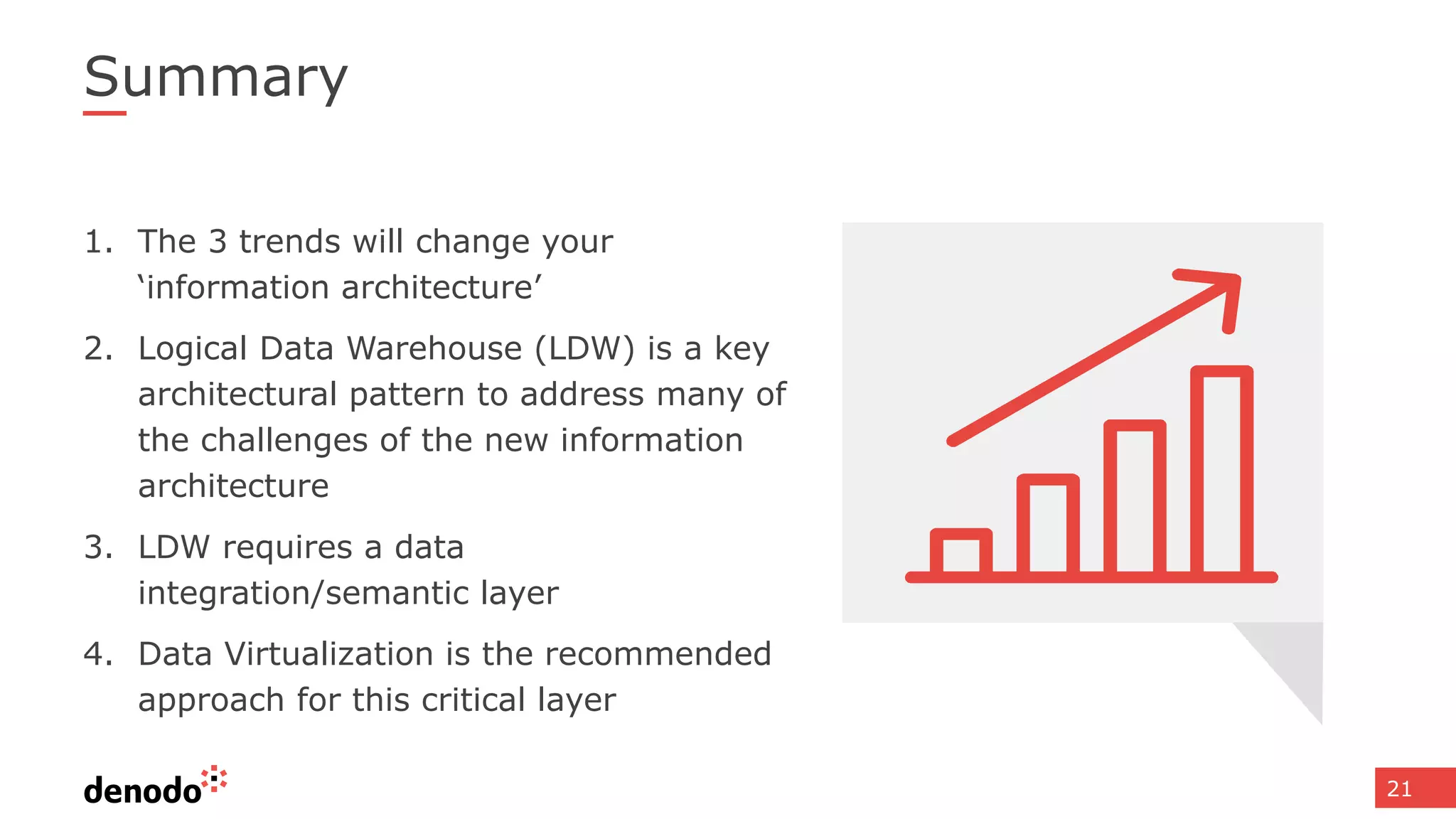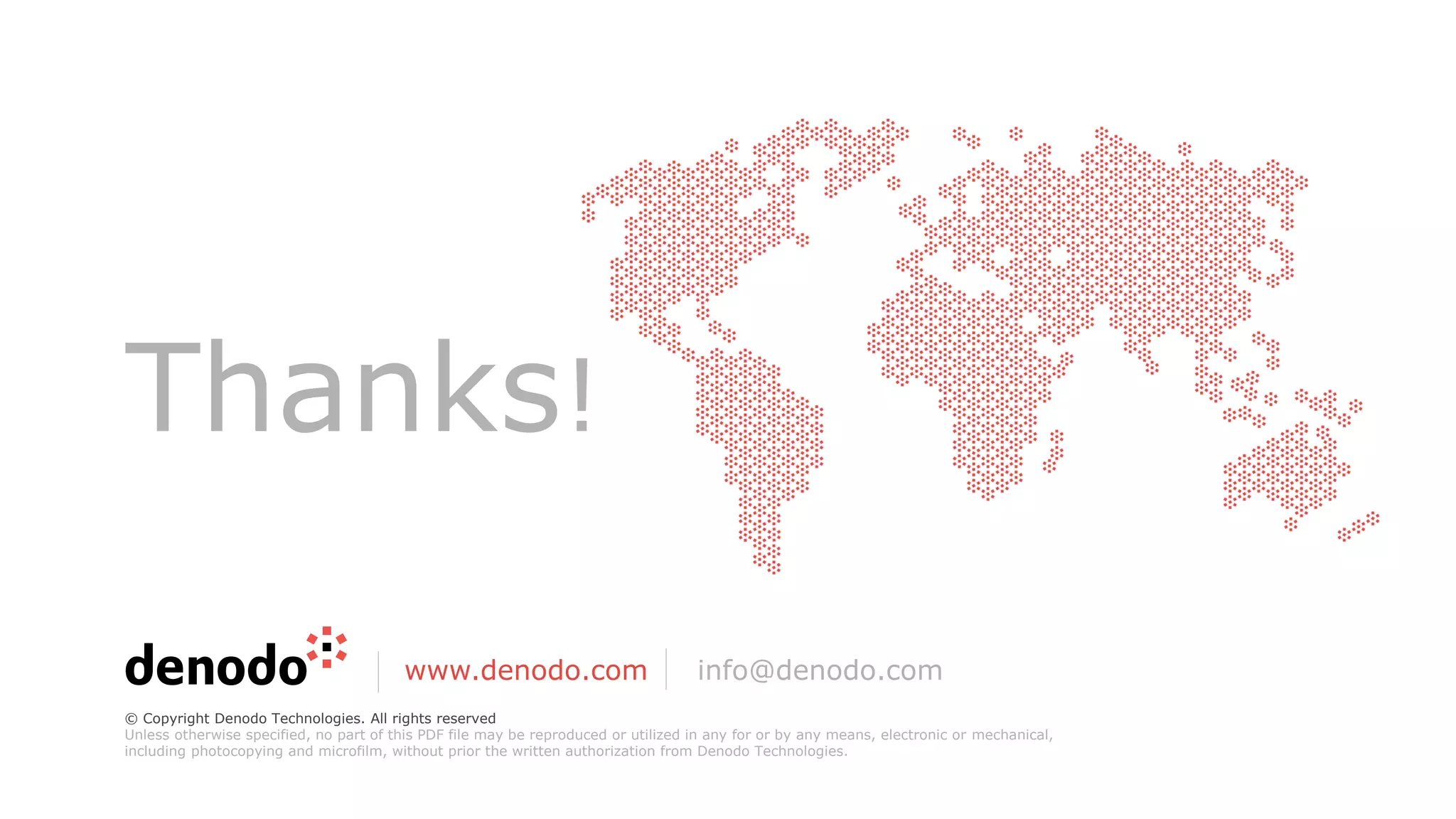The document discusses three key trends affecting data integration: the reduction of corporate data silos to enhance productivity, the establishment of a common data backbone for operational use, and the adoption of bimodal IT to support agile modernization efforts. It advocates for the logical data warehouse (LDW) as a modern architecture integrating traditional data management with alternative strategies, emphasizing the need for a data integration/semantic layer, with data virtualization as the preferred approach. The document concludes by highlighting that these trends will significantly influence information architecture.
